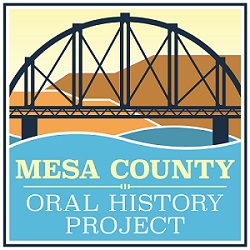If you’re a user of the internet and any bit excited about cooking, crafting, home design, travel, or general entertainment, chances are you have experienced the (sometimes addicting) Pinterest app. Pinterest is a social media network designed for users to easily search specific topics, save information and photos, and discover new ideas based on personal interests.
The original women pioneers of Mesa County never had the joy of scrolling into a Pinterest black hole for hours at a time, but if they were around today they would undoubtedly contribute greatly to the abundance of content with their homesteading hobbies, tips, and tricks. Some of these original settlers of our great Grand Valley partook in interviews for the Mesa County Oral History Project, where their many talents are shared and available for your listening pleasure.
Emma Berg Nagel moved to Fruita, Colorado in 1894 with her parents and quickly fell into life on their homestead. Her family produced butter and young Emma helped deliver the butter to various customers. Her days as a player in the butter game may have spurred a love for baking wheat germ bread during her adult years, which she discusses on her Mesa County Oral History Project interview. Emma enjoyed bread best when there was a healthy dose of fresh molasses over the top (YUM).
Early pioneer Lucille (Hunter) Mahanna could certainly teach us a thing or two when it comes to knitting. She grew up on Hunter Ranch in Fruita (established in 1880 by her grandparents) and remembers learning how to knit at World War I knitting rallies while her husband was in the army to help make items for soldiers and their families.
Born in 1897, early resident Minnie Ann (Andress) Roberts homesteaded a two room shack with her husband when she first got married. Nowadays making your own clothes is trendy, admirable, and economical, but back in the day it’s just what you had to do to keep your family covered. Not only did Minnie make her own clothes for herself and her family, she also made her own soap to wash her clothes and keep the home clean:
“I used to take the (kitchen) grease and mound it up, then put lye in the water and put the lye-water in the grease, and cook it. We’d put it in a big kettle and cook it outside. The fumes from that there lye-water was real bad. You’d the pour it into little squares (to make the soaps)…” – Minnie Ann Roberts
(If you’d like to follow in Minnie’s footsteps, visit Mesa County Libraries Universal Class database for a Soap Making 101 class!)
Lastly, canning and preserving foods is an old method being utilized in the modern day with everlasting enthusiasm. Asunta Violeta (Lanza) Mendicelli was born in 1901 to Italian immigrant parents and moved to Mesa County in 1917. She remembers canning and preserving “about a thousand” cans of food of every year at home to raise her family. She also worked at a local canning factory, putting in long hours to feed her children.
For modern day tips on crafts, cooking, and more, visit the Mesa County Library Pinterest page ran by one of our crafty staff members! If you’d like to hear how it was done back in the day, visit the Mesa County Oral History Project for interviews with early 1900s homesteaders.

